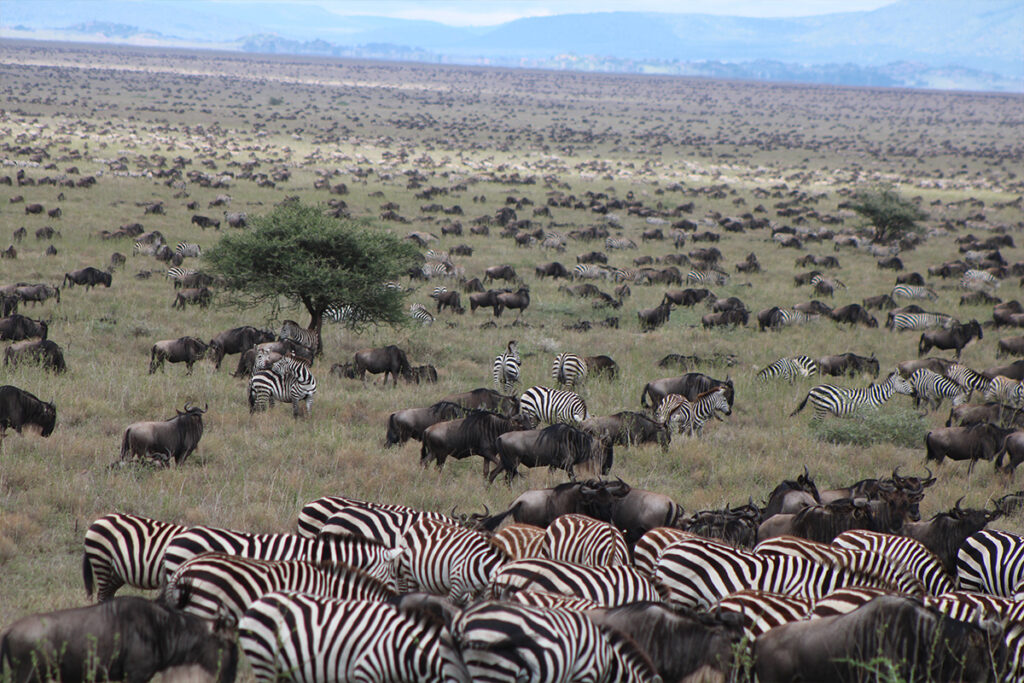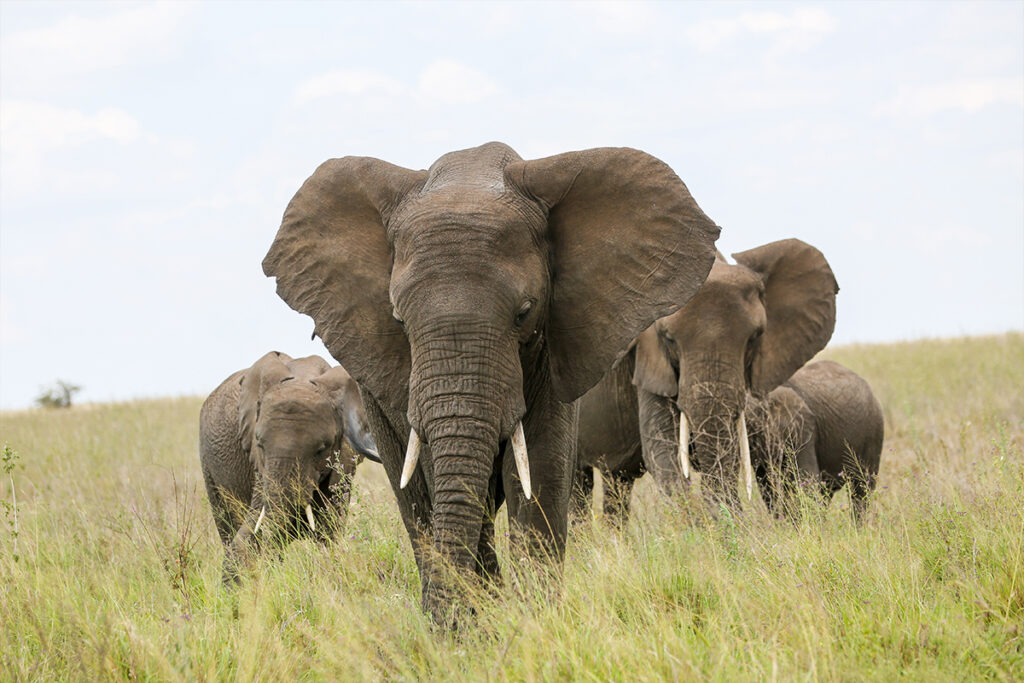Scaling the heights of Mount Kilimanjaro is a dream for many adventurers, but timing can make or break the experience. Uganda’s renowned climber, John Baptist Sematimba, once remarked that choosing the right season is like selecting the perfect rhythm for an intrepid dance. His wisdom serves as a compelling reminder of the delicate balance between nature’s temperament and human ambition in this endeavor.
The best times to ascend Africa’s tallest peak are during the dry seasons from June to October and December to February. Historically, these periods present clearer skies, more stable weather conditions, and unbeatable panoramic views. Interestingly, over 35,000 climbers take to the trails annually during these optimal windows, illustrating both a historic and modern understanding of Kilimanjaro’s temperament. For those seeking to intertwine the mountain’s grandeur with personal achievement, timing remains a critical factor to consider.

What are the Best Times to Climb Kilimanjaro?
Choosing the best time to climb Mount Kilimanjaro can greatly enhance your experience. The dry seasons, from June to October and December to February, offer the most reliable weather. During these months, the skies are often clearer, providing stunning views from the summit. This allows for a more predictable climb, minimizing the chances of being held back by heavy rain or clouds. Many climbers prefer these months for their friendly conditions.
From June to October, temperatures are generally cooler, which some climbers find more comfortable. The scenery can also be more vibrant as you’re climbing just after the rainy season. Wildlife is more active, making it an exciting time for nature lovers. Besides this, popularity during this time means the routes are more crowded. If you prefer solitude, consider climbing in the shoulder seasons.
December to February is another popular window for climbing. Although the temperatures are warmer, the sunny days offer unmatched visibility. This period coincides with the holiday season, so expect more climbers on the trail. Plan your trip early to secure accommodations. Despite the crowds, the experience is rewarding, making it worth the effort.
Consider your preferences and abilities when deciding when to climb. If you love vibrant environments and can handle a bit of crowd, the dry seasons are ideal. For those seeking solitude, exploring the quieter months might be beneficial. Weather conditions vary with altitude, ensuring each climb is unique. Being prepared for these factors is key to a successful ascent.
The Dry Seasons: June to October and December to February
The dry seasons of June to October and December to February are perfect for climbing Kilimanjaro. During these periods, the weather is more predictable, and precipitation levels are low, which means fewer chances of rain and muddy trails. These months offer clearer skies, allowing breathtaking views from the summit. This makes the climb more enjoyable and gives climbers a better chance to reach the top safely. These conditions attract many adventurers, making these months the peak climbing seasons.
From June to October, the temperatures are cooler, with daytime highs ranging between 20°C to 30°C at the base. This cooler climate makes hiking more comfortable for many. In addition to the pleasant weather, the flora and fauna are in full bloom post-rainy season. Kilimanjaro’s unique landscapes appear more vibrant, adding to the visual experience. However, the popularity of this season means that trails can be crowded.
In December to February, the weather is warmer, but days are often bright and sunny. This period offers perfect conditions for climbing without the challenges of rainfall. The trails are less slippery, and the risk of altitude sickness may be lower due to the gradual acclimatization with stable weather. For those who enjoy holiday adventures, this time is ideal. However, accommodations fill up quickly, so advance booking is a must.
For a summary of the best conditions, consider:
- Avoiding rain, which makes trails treacherous.
- Enjoying clear, panoramic views.
- Benefiting from vibrant wildlife and landscapes post-rainy season.
Choosing the right season ensures a memorable climb to the top of Africa.
Factors to Consider When Planning Your Climb
When planning your climb of Kilimanjaro, several key factors need consideration to enhance your overall experience. First, assess your physical fitness, as a climb demands stamina and strength. It’s wise to engage in various exercises, like cardio and strength training, a few months before the journey. Understand that altitude sickness can affect anyone, regardless of their fitness level. Therefore, allow time for proper acclimatization during the climb.
Next, research the different routes, as each offers unique challenges and views. Kilimanjaro has several routes, including Marangu, Machame, Lemosho, and Rongai, each with its degree of difficulty and scenic appeal. Beginners might prefer the Marangu route for its easier path and comfortable huts. On the other hand, seasoned climbers may opt for the Lemosho for its remote landscapes. Choosing the right path can make the journey more enjoyable.
Clothing and gear are crucial for a successful climb. Packing the right items ensures comfort and safety in fluctuating weather conditions. Essential gear includes a sturdy pair of hiking boots, layered clothing, and a reliable backpack. Weather on Kilimanjaro changes rapidly, so being equipped is vital. Don’t forget sun protection and a first-aid kit.
Consider the costs involved in climbing Kilimanjaro, which include permits, guides, and gear. Creating a clear budget helps avoid surprise expenses that could affect your journey. Here’s a simple budget outline:
| Expense | Approximate Cost |
|---|---|
| Permits | $800 – $1,500 |
| Guides and Porters | $500 – $1,200 |
| Gear Rental | $200 – $400 |
Proper planning ensures a more enjoyable and safer climbing experience.
How Weather Patterns Affect the Kilimanjaro Climb
Weather patterns significantly impact the experience and safety of climbing Mount Kilimanjaro. Known for its unique climatic zones, the mountain showcases different weather conditions as you ascend. Climbing during the rainy months can be particularly challenging, with slippery trails and reduced visibility. Heavy rain increases the risk of climbing accidents. Thus, understanding how weather patterns vary is crucial for planning.
The rainy seasons typically occur from March to May and November. During these times, trails become muddy and difficult to navigate, demanding extra caution from climbers. Rain can also obscure the breathtaking views you’ve come all this way to enjoy. However, these months offer a less crowded climb, which some climbers might appreciate. But prepare for lower temperatures, especially at night.
In contrast, the dry seasons, from June to October and December to February, present more favorable conditions. These months generally offer dry trails and clearer skies, making the journey more enjoyable and safer. When the weather is clear, you can savor panoramic views from various points on the trail. Dry conditions also make packing and camping easier. This is why these seasons attract more climbers.
The mountain’s weather can be unpredictable, changing rapidly as you climb higher. As altitude increases, temperatures drop, and wind speeds surge. It’s not uncommon to experience temperature swings from hot to freezing within a single day. These varying conditions require climbers to be well-prepared. Layered clothing and adaptable gear are vital for tackling these shifts.
Understanding the impact of weather on your Kilimanjaro climb ensures a safer and more enjoyable experience. Due to the diverse weather on the mountain, planning and preparation are key. Here’s a quick checklist for climbers:
- Check weather forecasts before your climb.
- Invest in reliable gear suitable for varying conditions.
- Consult with guides for updated weather advice.
These precautions help maximize your adventure on Africa’s highest peak.
Frequently Asked Questions
Here are some common questions about climbing Mount Kilimanjaro, designed to help you better plan your adventure. Let’s dive into the details to ensure you have all the information you need.
1. What gear do I need for climbing Kilimanjaro?
When preparing for a climb, it’s essential to have the right gear. You will need a sturdy pair of hiking boots, warm layered clothing, a reliable backpack, and a good sleeping bag. Don’t forget important accessories like a hat, gloves, and sunglasses. Proper gear ensures comfort and safety throughout the climb.
Additionally, consider packing items like a headlamp, trekking poles, and a first-aid kit. High SPF sunscreen and lip balm will protect against sun exposure. Hydration systems are crucial to prevent altitude sickness. By having all the essential gear, you’ll be better prepared for the journey.
2. How do I prevent altitude sickness on Kilimanjaro?
Preventing altitude sickness is vital for a successful climb. It’s important to ascend slowly, allowing your body to acclimatize. Spend several days on the mountain to adjust. Drinking plenty of fluids and eating well helps keep your body hydrated and energized. Avoid alcohol and caffeine as they can lead to dehydration.
Another key factor is to listen to your body and rest when needed. If you notice symptoms like headaches or dizziness, inform your guide immediately. Medications like Diamox can also help with acclimatization. Following these steps can significantly reduce the risk of altitude sickness.
3. Do I need a guide to climb Kilimanjaro?
Yes, having a guide is mandatory for climbing Mount Kilimanjaro. Guides are experienced and knowledgeable about the terrain and weather conditions. They ensure your safety and give you the best chance to reach the summit. They also coordinate support staff like porters and cooks.
A good guide will monitor your health and provide valuable tips to manage altitude. They also enhance your experience by sharing information about the mountain’s history and ecology. Hiring a reputable guide service is one of the most important decisions you can make for a successful climb.
4. How long does it take to climb Kilimanjaro?
The duration of the climb depends on the route and your pace. Most climbers take between 5 to 9 days to reach the summit and descend. Shorter itineraries are more challenging and offer less time for acclimatization, which can increase the risk of altitude sickness.
Longer routes, such as Lemosho or the Northern Circuit, provide more time to acclimate and increase the chances of success. Taking a longer route helps your body adjust gradually to the altitude. Proper planning is essential to choose the best itinerary for your fitness level and experience.
5. What wildlife can I see on Kilimanjaro?
Mount Kilimanjaro is home to diverse wildlife across its various climatic zones. In the lower forests, you might spot animals like blue monkeys, colobus monkeys, and even elephants. Birdwatchers will enjoy seeing various bird species, including sunbirds and hornbills.
As you climb higher, you may encounter unique species adapted to the alpine conditions, such as the Kilimanjaro tree hyrax. While large animals are less common at higher altitudes, the rich biodiversity in the lower regions makes the climb even more fascinating. Take the time to appreciate the unique ecosystem of Kilimanjaro.
Conclusion
Climbing Mount Kilimanjaro is an exhilarating experience that requires thoughtful preparation and planning. By considering factors such as weather patterns, equipment needs, and potential challenges, you set the stage for a successful ascent. The dry seasons offer better conditions, making them favorable times for this adventure.
Ultimately, being mindful of the environment and prioritizing safety will enhance your journey. Guides play a crucial role in ensuring your success on this iconic climb. With the right mindset and preparation, reaching the summit of Kilimanjaro becomes an achievable and rewarding goal.



